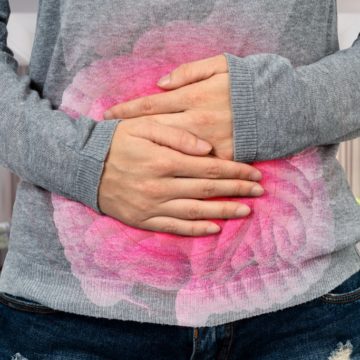
-
- Diverticulitis occurs when the diverticula in the large intestine are inflamed or infected.
- The cause of inflamed or infected diverticula is unknown.
- Staying hydrated and loading up on fruits and vegetables can reduce the risk for diverticulitis.
What is diverticulitis?
Diverticulitis is a condition affecting the digestive system and causing severe pain in the lower abdomen. Antibiotics or slight diet changes prescribed by a medical professional can usually treat the disease.
The difference between diverticulitis and diverticulosis

Diverticula are small pouch-like structures found in the lining of the large intestine. Diverticulosis is the term used to indicate the presence of diverticula in the large intestine, but this condition doesn’t usually cause a problem. In fact, the U.S. National Library of Medicine says half of the people 60 years and older have diverticulosis.
Dr. David Greenwald, Mt. Sinai Hospital’s director of clinical gastroenterology and endoscopy, says the diverticula are usually detected in a colonoscopy, X-ray, or CT scan. And diverticulitis occurs when the diverticula become inflamed or infected for unknown reasons.
Symptoms of Diverticulitis

1. Pain in the lower left abdomen
About 80 percent of people with diverticulitis feel a sharp pain in their lower left abdomen, below the belly button, says gastroenterologist Dr. Brian Putka of Cleveland Clinic.
2. Constipation
Many people with diverticulitis also experience constipation and diarrhea, but Dr. Putka says constipation is more common.
3. Fever and chills
If there is a bacterial infection in the diverticula, you might be feverish as your immune system fights the infection.
4. Change in appetite
The stomach pain caused by diverticulitis can cause appetite loss in some people. Dr. Greenwald also clarifies that no evidence proves that small bits of hard-to-digest food can get stuck in the diverticula and cause diverticulitis.
Risk factors for Diverticulitis

1. Low-fiber diet
High-fat and low-fiber diets can put people at a higher risk for diverticulitis, says Dr. Greenwald. Loading up on fiber from fruits, vegetables, grains, unprocessed bran, or a fiber supplement, can help prevent painful flare-ups of diverticulitis. If you decide to consume more fiber, do it gradually and stay hydrated to prevent constipation.
2. Lack of exercise
Regularly exercising can also help lower the risk of diverticulitis, says Dr. Greenwald.
3. Not drinking enough fluids
Staying hydrated helps the body function at its optimum level, and helps reduce the risk of diverticulitis. Loading up on water and clear fluids keep the stools soft and prevent constipation, especially when you’re loading up on fiber. If the stool is bulkier, the lesser the chance for areas in the intestine to bulge out.
4. Taking anti-inflammatory drugs
Certain medications, like nonsteroidal anti-inflammatory drugs (ibuprofen and naproxen), steroids, opiates, and calcium channel blockers, might raise your risk of getting diverticulitis. This becomes especially problematic for older people or those suffering from underlying conditions.
Source: The Healthy
